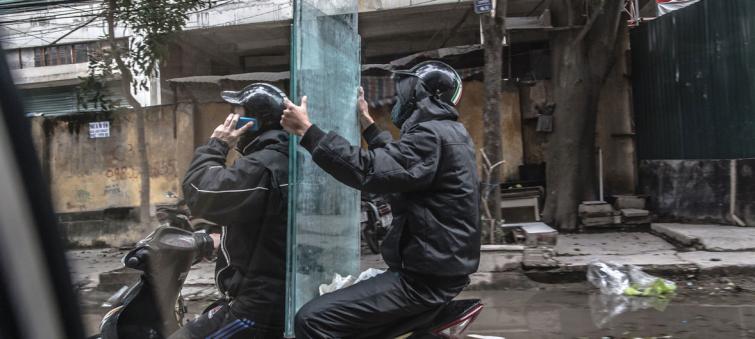
UN calls for action to tackle 'ubiquitous but invisible' global road safety crisis
New York/IBNS: Saving lives by improving road safety is “one of the many objectives of the 2030 Agenda for Sustainable Development”, the United Nations chief said in his message for the global day set aside for remembering the victims of traffick accidents.
Noting that more than 1.3 million people die in road accidents every year, Secretary-General António Guterres pointed out that more young people between the ages of 15 and 29 die from road crashes annually than from HIV/AIDS, malaria, tuberculosis or homicide.
“The World Day of Remembrance of Road Traffic Victims is an opportunity to reflect on how we can save millions of lives,” he said.
And since 2015, his Special Envoy on Road Safety, Jean Todt, has worked to mobilize political commitment, raise awareness about UN road safety conventions, foster dialogue on good practices and advocate for funding and partnerships.
“While the scale of the challenge is enormous, collective efforts can do much to prevent these tragedies”, the UN chief attested.
In 2018, a UN Road Safety Fund was launched to finance actions in low- and middle-income countries, where around 90 per cent of traffic casualties occur.
And next February, a global ministerial conference on road safety will be held in Sweden to strengthen partnerships to accelerate action.
“Urgent action remains imperative”, concluded the Secretary-General. “On this World Day, I call on all to join forces to address the global road safety crisis.”
‘Ubiquitous yet invisible’
The UN Department of Safety and Security (DSS) calls road traffic crashes a ‘hidden epidemic’.
According to DSS, they have a “dramatically transformative impact” on people’s lives with most causalities remaining “almost invisible to society at large”.
Last February, with the participation of UN leaders from the Secretariat, UN Development Programme (UNDP), UN Population Fund (UNFPA) and others, including the Chef de Cabinet and Special Envoy on Road Safety, the UN launched the Road Safety Strategy in New York and Geneva that showed unity and the shared message of road safety across the UN-system.
The Day has become an important tool in efforts around the world to reduce road casualties.
It offers an opportunity to draw attention to the scale of emotional and economic devastation road crashes cause and recognizes the suffering of victims and the work of rescue services.
Ending fatal road crashes are in line with the 2030 Agenda, particularly in line with Sustainable Development Goal 3 (SDG 3), which encompasses good health and wellbeing and SDG 11 on sustainable cities and communities.
Five pillars of road safety
Pillar 1: Road safety management
Pillar 2: Safer vehicles
Pillar 3: Safer road user behaviour
Pillar 4: Post-crash responses
Pillar 5: Safer driving environment
This takes leadership in demonstrating outstanding road safety behavior every day and working together to find the best solutions.
Photo caption and credit:
Eric Ganz
Two men transport glass panels via motor scooter in Vietnam. (file)
Support Our Journalism
We cannot do without you.. your contribution supports unbiased journalism
IBNS is not driven by any ism- not wokeism, not racism, not skewed secularism, not hyper right-wing or left liberal ideals, nor by any hardline religious beliefs or hyper nationalism. We want to serve you good old objective news, as they are. We do not judge or preach. We let people decide for themselves. We only try to present factual and well-sourced news.







